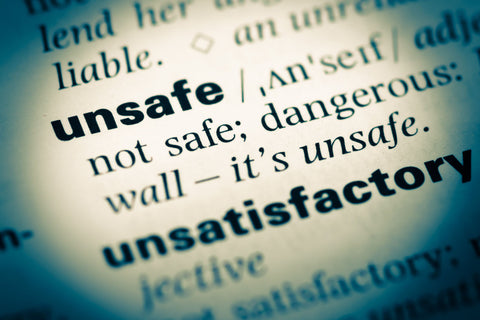
Are we encouraging our workers to work unsafely?
Share

Quality workers are hard to come by in today’s market. The economy is good, workplaces are expanding. Qualified and experienced workers are in high demand right across the country. So, as employers, we want to do our best to maximise the potential of the workers we do have which includes keeping them safe, happy and well. And yet, in almost every workplace I walk into, the answer to the headline question is “YES we do encourage our workers to work unsafely”. Is your workplace any different … probably not!! Here are some common ways employers actively encourage unsafe behaviours in their workplaces, whether they realise it or not:
Leading by example
Is your management style one of “do as I say, not as I do”? If so, you are encouraging your workers to work unsafely. Whether we like it or not, our workers look to leadership for guidance. If they see you working unsafely, they’ll think it is ok for them to as well… no matter what you might be telling them otherwise.
Turning a blind eye to unsafe behaviours
Managers and supervisors are busy people and sometimes it seems quicker and easier to simply turn a blind eye. Unfortunately turning a blind eye is a sure-fire way of reinforcing undesired and unsafe behaviours.
Applying blanket approaches
Blanket approaches invariably create unnecessary risks for certain groups of workers. E.g. hard hats and steel cap boots aren’t safe for some construction workers and yet, some sites will insist all workers on site wear them.
Failing to assess the competency of new workers
Just because a worker has a qualification it doesn’t mean they know how to work safely or how to use tools safely. The only way to be sure workers know how to work safely is to assess their competence by watching them work before you let them work unsupervised.
Failing to vet and assess contractors
Contractors are a significant risk for any business who uses them. WorkSafe NZ is very critical and unforgiving of workplaces who don’t actively work with their contractors to create and maintain safe environments. You can certainly contract the work out, but you can’t contract out your health and safety responsibilities. Despite this, many businesses engage contractors without any understanding of their health and safety capabilities. What do you know about your contractors and what are you doing to work with them on your sites?
How is your workplace designed?
Simple things like the position of a workbench, the height of a draw, the location of a PC, can all make a difference to the safety of your workers. Is this a consideration when you make changes to the workplace layout? Are you engaging ergonomics professionals to help with this? It might seem like an expense at the time, but the rewards are generally
Learning opportunities
Upskilling and cross skilling your workers has many benefits, and not just from a safety perspective, and yet, it is an area that I find is often neglected, particularly in smaller businesses. We get so busy doing the work we do, that we forget to allocate time to learn and adapt.How is your work organised?
Sometimes the way work is organised makes it impossible for workers to work safely. Do you have enough resource, are you supplying the most appropriate tools, do you ensure your workers to take their allocated holidays? These are all areas that impact the health and safety of your workplace.
